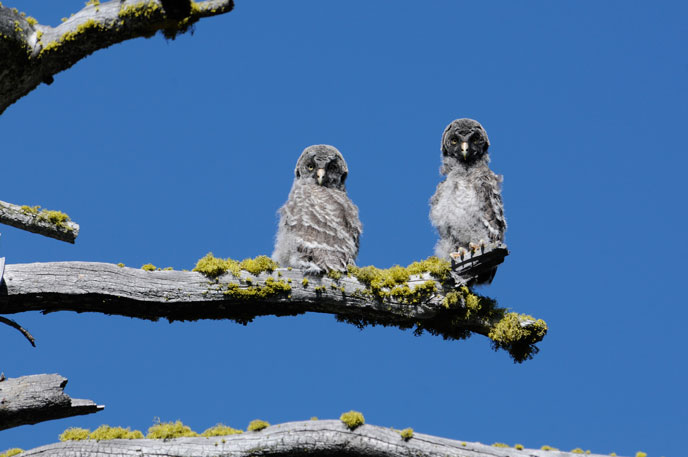|

NPS Photo
Among the diversity of wildlife in Yosemite National Park, approximately 150 Great Gray Owls call the park home. This is approximately 65% of the Great Gray Owl population in the state of California. The Great Gray Owl is a California State Endangered Species and is a large-bodied raptor that is also found in Asia and Europe. However, research has shown that the Sierra Nevada is home to a genetically distinct population of Great Gray Owls, with the proposed subspecies name of Strix nebulosa yosemitensis. The park, in collaboration with researchers from the U.S. Forest Service and the University of California, at Davis, has been conducting research on the owl population for several years now and is learning new information about this unique subspecies found only in the Sierra Nevada. A new method being employed to study the owls is the use of passive recording devices along the edges of meadow habitats, where the owls are believed to nest. The recording device allows researchers to "listen" for clues to help them locate the raptors and their nesting sites. After deploying the passive recording device method over the summer, researchers successfully located a Great Gray Owl nest, with two small juvenile birds present, in a lodgepole pine snag. This is the first recorded instance in the state of California that a nest was located in a lodgepole pine snag, as opposed to the more customary fir snag. Additionally, this nest site was one of three active nests located within the park this year. Further monitoring showed the birds to be healthy and developing at normal rates. Following a summer windstorm, researchers returned to one of the nests to further observe the young birds. Upon arrival at the site, researchers discovered that one of the nest snag had fallen over, presumably crushing the juvenile birds. Researchers, with the use of passive recording devices, were able to confirm that all juveniles survived the fall and were continuing to be fed by both parents. The area continued to be monitored for the rest of the season. Another research method being used in the park to study Great Gray Owls is molted feather collection and analysis. This non-invasive research method allows scientists to study survival rates, reproduction patterns, and other important information through the DNA found in the collected feathers. This research method also helps mitigate negative impacts on the sensitive Great Gray Owl population in the park. Protection of the Great Gray Owl is one of the park's highest research priorities. The research team includes individuals from the National Park Service, the U.S. Forest Service and University of California at Davis. Additional research funds are provided by the Yosemite Conservancy. |
Last updated: March 1, 2015
